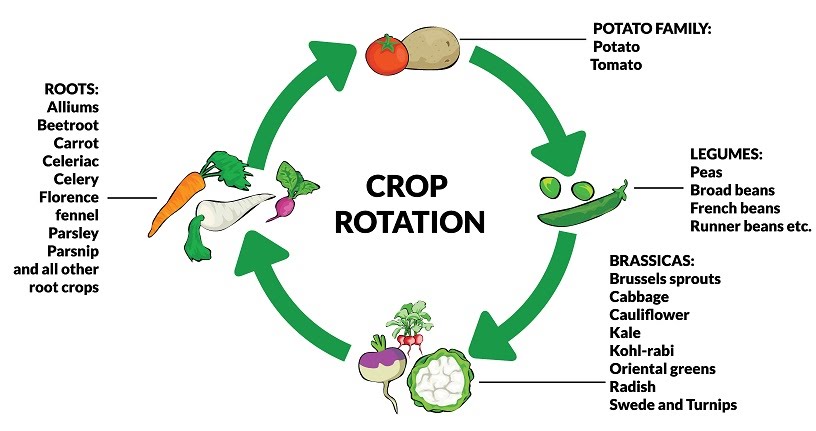Promoting biodiversity
Practices that boost food production at the expense of biodiversity
Case study: super soya beans
Promoting biodiversity
Human activities such as intensive farming can negatively impact biodiversity. Various practices limit this impact, and can even improve biodiversity. These practices include polyculture rather than monoculture, crop rotation, hedgerow conservation and maintenance, predator strips at field margins, and integrated pest management and biological control.
-Polyculture
Polyculture refers to cultivating multiple species of plant in the same area, rather than just one (monoculture). This improves biodiversity and attempts to reproduce the existing biodiversity in the environment.

Cultivating different plants together can also improve their resistance to disease, as shown by growing different rice varieties in China, decreasing disease incidence by 94%. This rendered pesticides unnecessary.
A disadvantage of polyculture versus monoculture is the increased labour needed to carry it out.
-Crop rotation
Crop rotation refers to cycling the type of plant grown in an area with every season. It prevents the depletion of specific nutrients from the soil.

Additionally, the soil is better structured after growing different crops in it. Pathogens and pests are also disrupted and prevented from building up as a result of prolonged culture of just one species.
A disadvantage of crop rotation is that it is very sensitive to multiple environmental factors such as the weather, and therefore cannot be planned too long in advance. If the rotation isn’t right, rectifying it can take a long time.
-Hedgerow conservation
Hedgerows are critical habitats and corridors between isolated areas used for farming. They host moths, fungi and insects, and provide key resources for many mammals, birds and insects…
